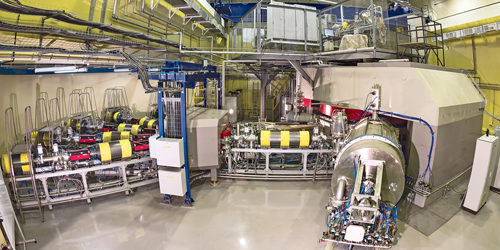Super Heavy Element Factory Releases First Results
Although elements 104 to 118 in the periodic table have been discovered and named, the properties of these superheavy elements remain uncertain. To help fill this knowledge gap, scientists built a dedicated facility called the Super Heavy Element (SHE) Factory, which began its first experiment in November 2020. Yuri Oganessian at the Joint Institute for Nuclear Research (JINR) in Dubna, Russia, and his colleagues have now reported the results of this initial investigation [1].
The team fired a beam of calcium ions at a target containing the radioactive metal americium, creating isotopes of moscovium (element 115) among the collision products. This is the same process that researchers at JINR used in 2003 when moscovium was synthesized for the first time. The experiment at the SHE Factory, however, benefited from a more sophisticated data analysis and from an optimized separator—a device that isolates generated superheavy nuclei from the calcium beam and from the other reaction products. Oganessian and colleagues were able to discover 55 decay chains for moscovium-288 and six for moscovium-289.
The researchers achieved the first observation of alpha decay—a process in which a nucleus releases two protons and two neutrons—for a specific isotope of dubnium (element 105). They also identified a previously unseen isotope of lawrencium (element 103), a product of the dubnium decay. Finally, they found that the yield of moscovium-288 in the SHE Factory experiment was larger than the yield of superheavy nuclei in all previous experiments. According to Oganessian and colleagues, these results show that the SHE Factory is an excellent laboratory for researching superheavy elements.
–Ryan Wilkinson
Ryan Wilkinson is a Corresponding Editor for Physics Magazine based in Durham, UK.
References
- Y. T. Oganessian et al., “First experiment at the Super Heavy Element Factory: High cross section of 288Mc in the 243Am + 48Ca reaction and identification of the new isotope 264Lr,” Phys. Rev. C 106, L031301 (2022).




